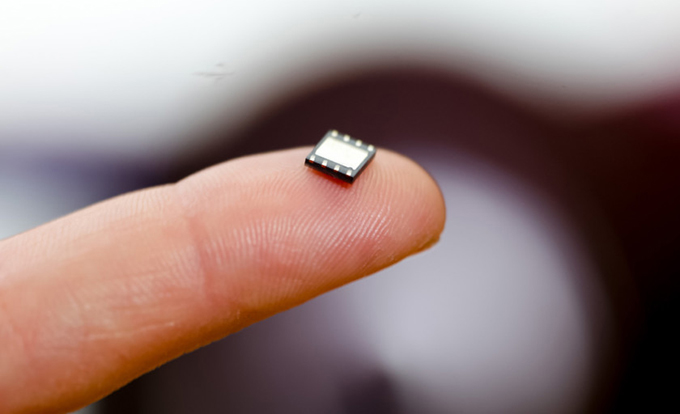
Over the last decade, the Internet of Things (IoT) has emerged from just a mere concept into a reality, and now there are billions of IoT devices and sensors deployed all over the world. By 2024, it is expected that the total number of connected IoT devices will reach 83 billion, up from around 35 billion devices in 2020.
Even today, a lot of these devices are being deployed in remote, hard-to-reach locations, and some IoT networks can include thousands, if not tens of thousands interconnected devices in them.
In such cases, provisioning a brand new device into the network can be extremely time-consuming and costly, and this is why remote SIM provisioning or RSP is now becoming a necessity.
What is Remote SIM Provisioning?
Remote SIM Provisioning (RSP) is a specification developed by GSMA for machine-to-machine connections. As the name suggests, RSP allows users to remotely activate the SIM in a device/machine. This device can be a smartphone, smartwatch, wearables, and others, but RSP is most commonly used for provisioning IoT devices and sensors.
With this specification, we can streamline the process of provisioning an M2M service, and also allow a single user to have multiple network operators in just one SIM card, potentially for different services like one for data service and another for roaming.
RSP is actually one of the different features or aspects included in the relatively new eSIM (embedded SIM) technology, and we can’t properly explain RSP without first discussing eSIM, which we will discuss below.
What is an eSIM?
eSIM is a relatively new form of SIM to replace the traditional SIM card you most likely still have in your smartphone.
SIM stands for Subscriber Identity Module, and its main function is to store your identity as a network provider’s subscriber so this network provider can provide the service/connection you’ve subscribed to.
For decades, the SIM has come in the form of a plastic card in several different sizes (micro, nano, etc.), but an eSIM, as the name suggests, is embedded or soldered into the device itself in the form of a very small chip.
One of the key advantages of this eSIM design is RSP. A physical SIM card typically can only store single identity information from a single network provider. For example, you won’t be able to use a Verizon SIM card to access the T-Mobile network and vice versa.
Meaning, if you want to switch providers, you’ll need to replace the SIM card with a new one from the new provider.
The thing is, if we are only doing this for a single device (i.e. our smartphone), then this probably won’t be a major issue. However, imagine replacing thousands of SIM cards for your IoT devices when you are switching to a new network provider. Not only is this time-consuming, but the replacement cost can be very high.
This is where RSP can significantly help, especially in large-scale IoT deployments.
With the RSP function, the eSIM can download different identification data from different network providers, and so we can easily switch between different network providers via an application/software (where the IoT device is managed remotely) without needing to replace the SIM card anytime you switch between different networks.
RSP is also useful for IoT applications that need to switch to different networks in different countries, for example, autonomous vehicles that move between different countries. In such cases, an eSIM data plan that offers global coverage and can seamlessly switch between networks in different geographical locations can significantly help. Truphone for Things data plans, for example, offer coverage in 188 countries while also offering full RSP support.
eSIM and RSP’s Effect on IoT Connectivity
With what we’ve discussed above, there are three key improvements provided by the eSIM technology and RSP specification in IoT connectivity:
- Durability: An eSIM is embedded into the device and thus is protected by the device’s physical shell. The eSIM has also been physically improved in the manufacturing process so it can withstand extreme temperatures and harsh conditions
- The ability to switch between different carriers without needing to replace the SIM card
- Bootstrapping newly powered IoT devices remotely
Bootstrapping is a very important challenge in larger-scale IoT implementations, and the larger the IoT deployment, the harder it will be to properly implement bootstrapping. RSP is a critical function to allow fully automated and standardized bootstrapping.
That is, we can connect brand new IoT devices to the IoT network fully automated, fully remote, and in a more secure manner. Newer IoT devices also feature eSIMs that have their own device bootstrapping identity, allowing a seamless onboarding of devices to the device management server while securing the data communication with the IoT network.
End Words
eSIM and Remote SIM Provisioning offer various benefits especially in providing more versatility in integrating your IoT devices in an IoT deployment. However, you’ll need a proper IoT SIM card partner to make the most of your eSIM and RSP that can provide the following:
- Multi-network connectivity: a single eSIM solution that provides choices for different carriers, types of network (LTE/3G/NB-IoT), and coverage locations
- Single user interface: the IoT data plan must include a management platform that enables us to monitor all network connections with real-time reports and diagnostics
- Versatility: remotely programmable based on GSMA eSIM standards, so we can integrate eSIM apps for various functionalities like network monitoring and authentication
eSIM and RSP are undoubtedly the future of IoT cellular connectivity, especially for large and global-scale IoT deployments.
